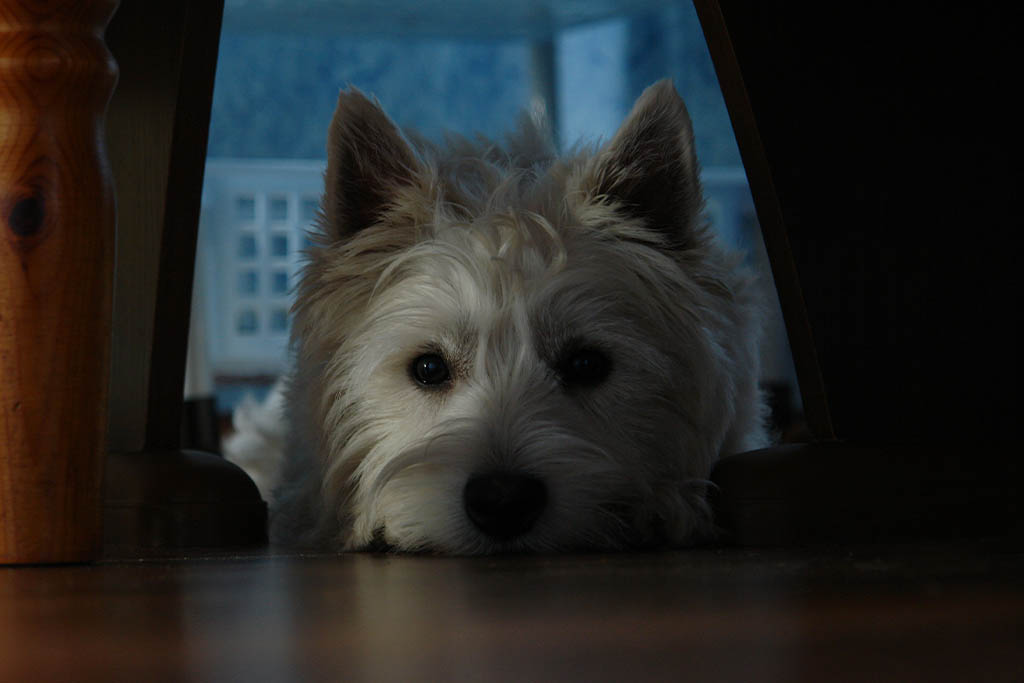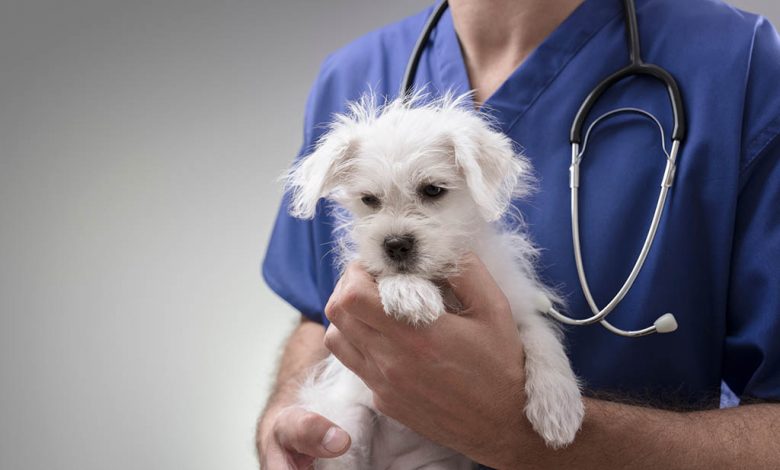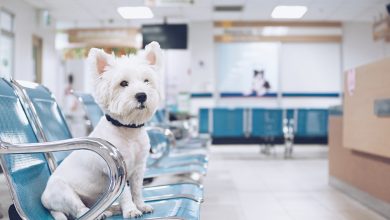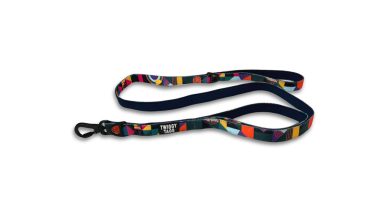Does your Westie Hate the Vet?
Learn how to make these encounters less frightening.
In an ideal world all our dogs would be used to going to the vet. There is a lot to be said for starting these visits when a dog is still a puppy. Happy visits to the vets for things like puppy parties will help to build a positive experience. If the only meeting a dog has is of been poked, prodded, having a needle stuck in it or getting its temperature taken then the mere smell of the vet’s surgery can trigger a negative reaction. Okay that is all quite simplistic.
The world is not an ideal place, and we have been living through the strangest of times. In addition, many do not have the dog from puppyhood so the positive experience cannot be built. Choosing a vet can be very tricky and a lot will depend on what your priorities are. As someone who has always had rescues and rehomes my priority is to have a vet capable of gently handling a fearful animal.
It is essential to start to make our dogs’ encounters less frightening. There are several factors that will exacerbate the dog’s anxiety not least is our own worry and stress. Dogs are very good at picking up on feelings so if we are tense when taking them to the vet, they are likely to become more anxious. They also have up to 300 million olfactory receptors in their noses compared to about six million in us. Therefore, they will smell things in the vets that we cannot smell and this can trigger a negative response if it reminds them of something where pain was caused.
There are, however, ways in which we can help our dogs become less anxious about seeing the vet.
The first thing many vets do on a visit is weigh the dog, but lots of practices will have a free weighing session that a nurse may run. That is a good place to start. Take your dog to be weighed and reward it for sitting on the scales, this trains two things; one it helps accept being weighed and two that not all visits end up with something uncomfortable happening. If the surgery isn’t too far from home, walk past it regularly and let the dog smell the outside of the building without going in, or if you can drive and park nearby and still walk up to it again the dog will realise that being there doesn’t always mean going inside. Reward your dog for being calm around the building – it’s all about building a positive association. Again, during more normal times many vets will allow you to pop in to reception just for a ‘hello’, they understand that this will help when a dog needs to be seen by them.

If you do have to take your dog to the vets one suggestion is to try and go early in the day with as little time in the waiting room as possible. The likelihood is you won’t be the only one in the waiting room and the sight of another dog, cat, or the smell of the bags of food can be enough to escalate a dog’s excitement. The best approach is to try and keep the dog calm.
You can prepare your dog for the handling it may receive during an examination simply by practising at home. If you check its teeth, paws, tail, ears regularly, (daily if possible), then it won’t come as such an unpleasant experience when the vet touches them. Reward your dog for being calm when it is being touched don’t forget lots of praise will also help. When you are in the surgery with your dog stand at your dog’s head talk to them and even give some treats unless you’ve been told to fast them. Uncomfortable interventions like having their temperature taken deserves extra treats and praise and maybe even a favourite toy. A squeaky toy could divert attention if it is used at the same time as a potentially painful procedure.
Once you have finished with the vet, my routine is to take my dog back to the car settle my dog then return to pay my bill and collect any medication. That way I limit the amount of time the dog is physically in the vets.
My other big tip, and one many people don’t seem to like, is to muzzle train your dog in order to keep the vet safe and to reduce your own anxiety. If you know your dog cannot bite the vet that’s one less thing to worry about. Any dog is capable of a bite if it is in pain, extremely anxious and stressed. Get the dog used to wearing a muzzle when it isn’t stressed, like any training it needs a slow build up. Regularly popping a muzzle on while lavishing your dog with praise and rewards will mean it is something positive for the dog. Waiting until you are about to go to the vets or are actually there before introducing your dog to the muzzle will mean it quickly associates it with unpleasant experiences and he will begin to fear it.
There are some dogs that really do need more than this in order to be able to be seen by a vet, occasionally dogs are so fearful that some form of medication is the only option. Vets can prescribe anti-anxiety drugs that you give your dog before a visit but that would be for extreme cases. For mild cases there are anxiety relieving natural supplements and preparations that may help. Dogs cannot learn if they are highly anxious so it is up to us to bring their fear and anxiety down to a level where the dog can respond.
Whatever we do dogs will not get over the fear without us being patient. As with all training being calm and consistent is key. Many vets now have a member of staff who also has a background in behaviour and if you are struggling to get an anxious dog through the door it may be worth contacting them first. As ever I would also recommend you find a behaviourist if you continue to struggle as they can be impartial and give you the tools in order to remain calm to help your dog.






